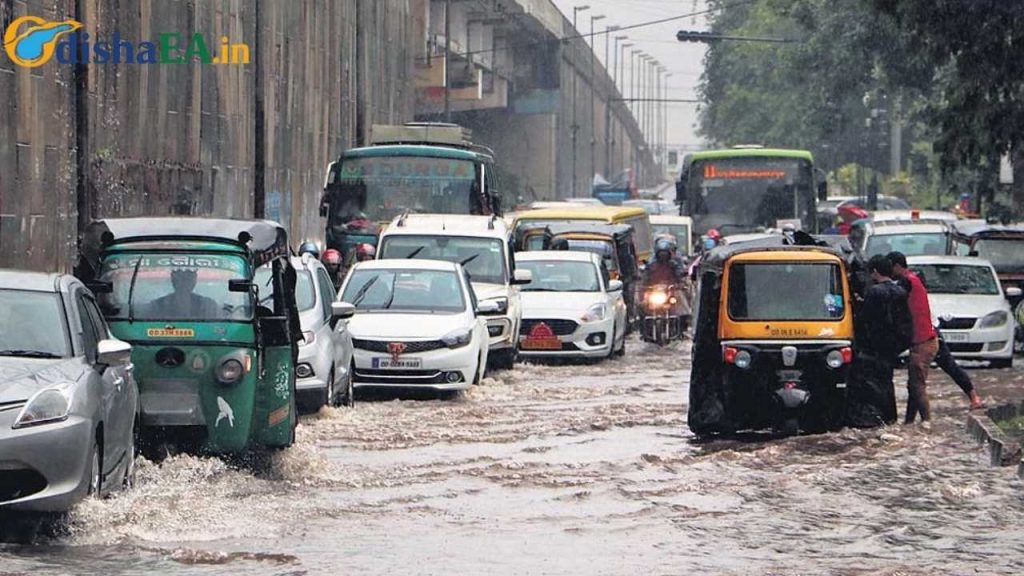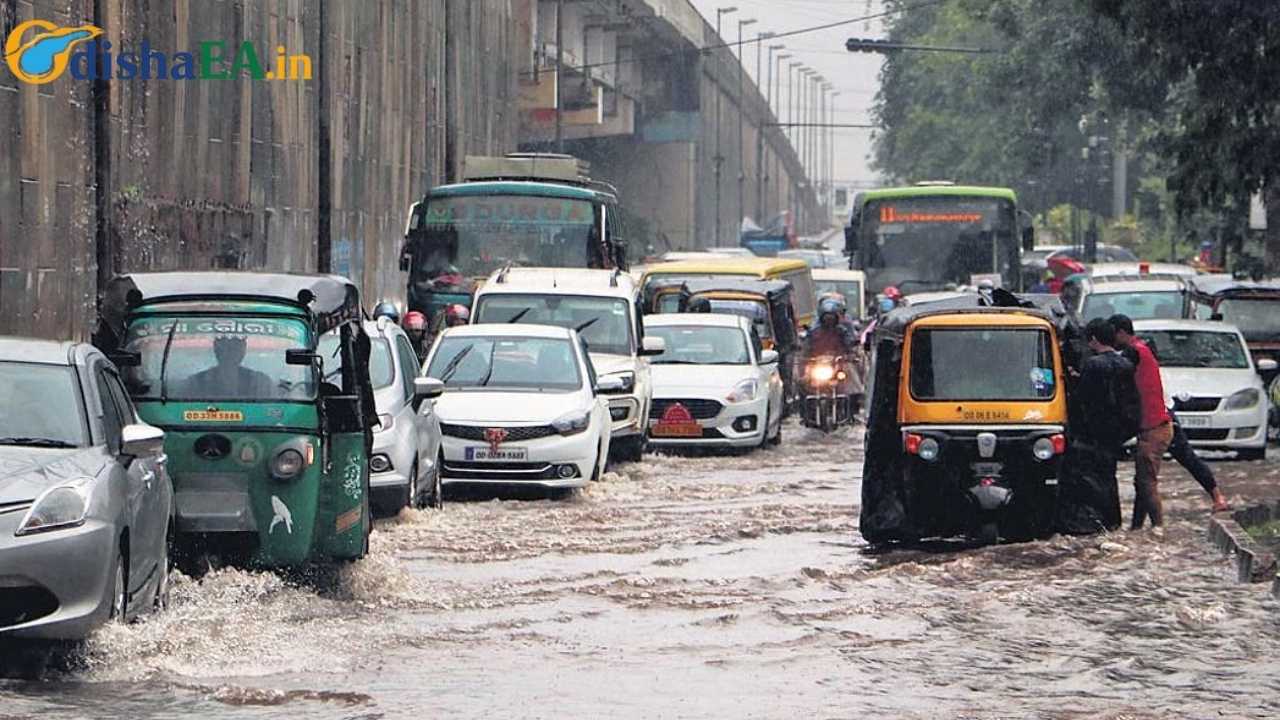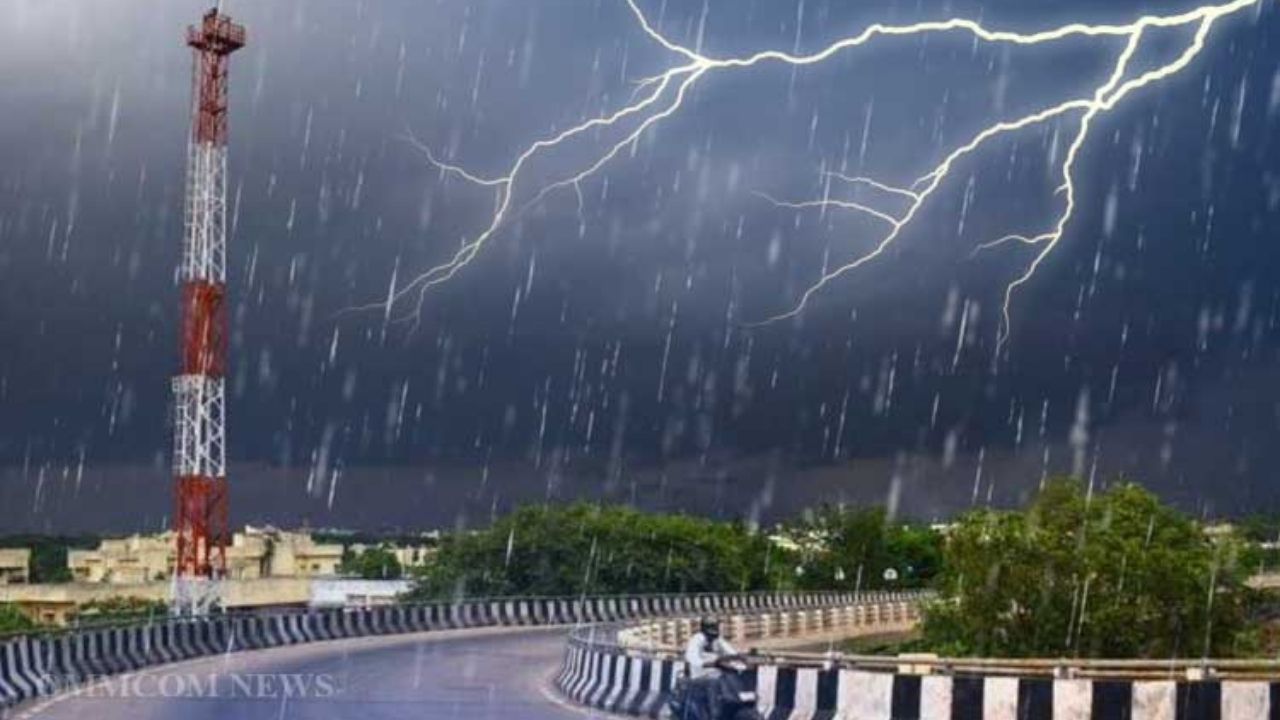When it rains, it pours—and in Bhubaneswar, that’s not just a saying. Waterlogged routes bring Bhubaneswar to a standstill almost every monsoon season, and 2025 is proving no different. Heavy downpours have turned busy city streets into mini rivers, forcing commuters to wade through knee-deep water, vehicles to stall, and whole neighborhoods to grind to a halt.

This isn’t just about a little inconvenience. We’re talking about disrupted livelihoods, delayed emergency services, and economic losses that ripple through the community. For residents, it’s déjà vu year after year, and for city planners, it’s a wake-up call that feels long overdue.
Waterlogged Routes Bring Bhubaneswar to Standstill
| Factor | Details |
|---|---|
| Main Issue | Waterlogged roads in Bhubaneswar after heavy rainstorms. |
| Worst-hit Areas | Cuttack-Puri Road, Rasulgarh, Jaydev Vihar, Bomikhal, Old Town. |
| Impact | Traffic jams, stranded vehicles, school delays, disrupted business. |
| Root Cause | Poor drainage, clogged canals, incomplete road projects. |
| Govt. Response | BMC rapid teams, NHAI kerb removals, SOPs for urban flooding. |
| Professional Impact | Delays in logistics, employee commute issues, reduced productivity. |
| Reference | Bhubaneswar Municipal Corporation Official Website |
Waterlogged routes bring Bhubaneswar to a standstill every monsoon, and the cycle will continue unless long-term infrastructure solutions replace short-term fixes. Residents, commuters, and businesses all pay the price for poor planning, but with awareness, preparation, and pressure on authorities, change is possible.
This isn’t just a Bhubaneswar problem—it’s a story echoing in cities across India. And just like in the U.S., where cities like New Orleans or Houston have faced similar struggles, resilience comes from better planning, community action, and personal readiness.
Why Bhubaneswar Keeps Getting Waterlogged
Poor Drainage Systems
Bhubaneswar’s drainage system wasn’t built to handle the massive bursts of rain that monsoons now deliver. According to local reports, the city’s stormwater drains are clogged in more than 40% of locations due to uncollected garbage, illegal encroachments, and half-completed construction projects.
Think of it like a sink clogged with hair—you turn the faucet on full blast, and pretty soon, you’ve got water everywhere but down the drain.
Rapid Urbanization
The city has grown faster than its infrastructure. High-rise apartments, commercial complexes, and endless road expansion haven’t been matched with modern drainage designs. More concrete = less soil to soak up rain.
Climate Change Factor
Let’s not forget the elephant in the room—climate change. The Indian Meteorological Department (IMD) reports that extreme rainfall events in Odisha have increased by 12% over the last decade (IMD Report). That means more sudden cloudbursts and flash floods.
The Human Side: Everyday Struggles
Commuters and Workers
Imagine being stuck on your way to work, knee-deep in water, with your bike sputtering and dying. That’s daily life for thousands. Workers report arriving late, exhausted, and soaked, which slashes productivity. Businesses from small shops to tech offices are taking hits.
Schools and Families
Parents have voiced major concerns. Heavy rainfall during school dismissal hours left kids stranded, buses rerouted, and two-wheeler-riding parents drenched and frustrated. Safety is also a top concern when kids have to cross flooded streets.
Local Businesses
From food vendors to delivery drivers, anyone dependent on street-level operations is losing money. Even e-commerce deliveries slow down when trucks can’t pass waterlogged roads.
Government Action: What’s Being Done
The Bhubaneswar Municipal Corporation (BMC) and National Highways Authority of India (NHAI) have stepped in with emergency measures:
- Rapid Response Teams: Over 100 distress calls in a single day were managed with drain unclogging and water-pumping operations.
- Kerb Removal: NHAI has started removing raised concrete kerbs along NH-16 (Rasulgarh–Vani Vihar stretch) that were acting like dams for stormwater.
- Canal Clearing: Embankments at Badagada Canal are being widened to improve water flow.
- Future SOPs: CM Mohan Charan Majhi has directed urban officials to implement Standard Operating Procedures (SOPs) for urban flooding.
These steps are a start, but let’s be honest—they feel more like band-aids than surgery.
Practical Guide: How Residents Can Stay Safe & Prepared
Here’s where we make it practical. You don’t need to be a civil engineer to protect yourself and your family during Bhubaneswar’s waterlogging nightmares.
1. Plan Your Routes Ahead
Use Google Maps or local apps that show live traffic conditions. Avoid hotspots like ISKCON Road, Badagada Canal Road, and Rasulgarh when rain is predicted.
2. Protect Your Vehicle
- Don’t attempt to drive through water deeper than 6 inches—it can cause engine hydro-lock.
- Coat your bike’s electricals with WD-40 or similar sprays to avoid short circuits.
- Park on higher ground when possible.
3. Emergency Supplies at Home
- Keep a basic emergency kit: torchlight, battery bank, dry snacks, drinking water.
- Store important documents in waterproof folders.
4. Health Safety
Standing water = mosquito breeding. Use repellents and ensure no open water buckets are left outside. Dengue and malaria spikes are common post-monsoon.
5. Stay Informed
Follow official BMC updates on their Facebook page for warnings, relief measures, and helplines.
The Professional Angle: Why This Matters for Business
Waterlogging isn’t just a local annoyance—it’s an economic issue. Studies from the National Institute of Disaster Management (NIDM) suggest that Indian cities lose $2–3 billion annually due to urban flooding. For Bhubaneswar:
- Logistics firms face delivery backlogs.
- IT companies report absenteeism and delays.
- Retail stores see footfall drop drastically during heavy rains.
For professionals, this isn’t just about “getting wet.” It’s about productivity, business continuity, and even career reputation when you can’t meet deadlines.
Low Pressure Weakens but Malkangiri Braces for a Day of Torrential Rain: Here’s What to Expect
Odisha’s Flood Nightmare Eases—But Here’s Why Authorities Aren’t Celebrating Yet
Dramatic Footage Shows Truck Carried Away by Flash Floods in Sundargarh, Odisha
FAQs
Q1: Why does Bhubaneswar get waterlogged so easily?
A: Poor drainage systems, clogged canals, unplanned urbanization, and sudden heavy rainfall events are the main culprits.
Q2: Which areas should commuters avoid during heavy rains?
A: Key hotspots include Rasulgarh, Jaydev Vihar, Bomikhal, Cuttack-Puri Road, and ISKCON Road.
Q3: How can I keep my vehicle safe during floods?
A: Avoid driving through waterlogged streets, park on higher ground, and use protective sprays on electrical parts.
Q4: What steps are authorities taking?
A: BMC is deploying emergency response teams, NHAI is modifying road structures, and the CM has asked for long-term SOPs on flood management.
Q5: Where can I get real-time updates?
A: Check the official BMC website or their social media channels for alerts.





